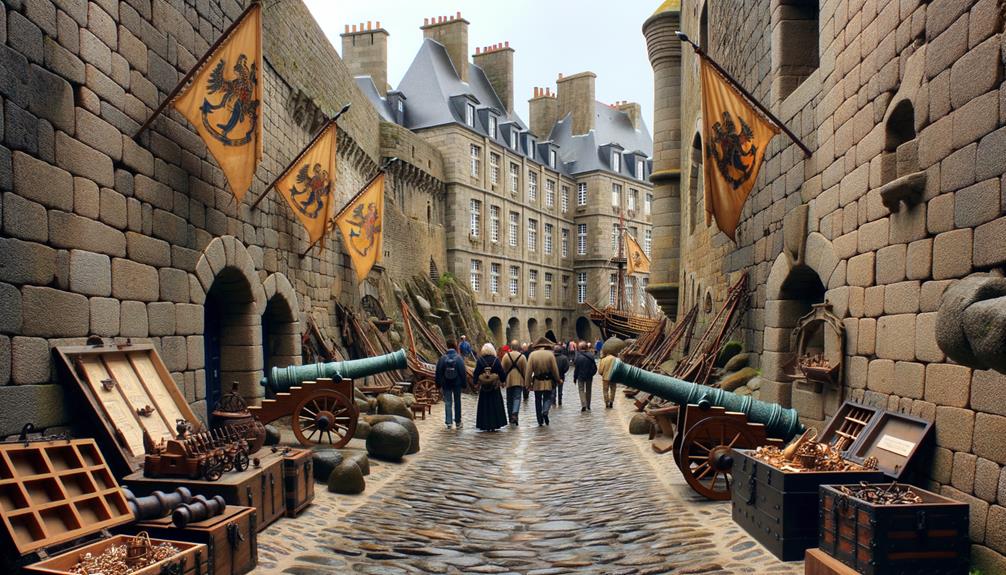Strolling through Saint-Malo, you can't help but sense its rich history, especially on one of the Pirate History Walks. Each step takes you back to the days of privateers, those bold figures who were part outlaw, part hero. The impressive Château de Saint-Malo Paramé, the fortified walls, and the strategic Fort National all have stories of adventure and betrayal to share. Listening to the guide talk about the exploits of famous privateers, you start to see how these maritime legends have shaped the city's character. What other secrets could be hidden in Saint-Malo's cobblestone streets?
Role of Privateers
Privateers played a crucial role in Saint-Malo's history, operating with the king's explicit permission to attack and seize enemy ships. With their letters of marque, these French privateers were authorized to target enemy vessels for their goods and treasures, setting them apart from common pirates who acted outside the law.
As I strolled through the narrow, cobblestone streets of Saint-Malo, I couldn't help but think about the daring exploits of these French privateers. Their actions weren't just about personal gain; they also aimed to disrupt enemy trade routes and weaken naval forces. They had a significant impact on naval warfare, capturing valuable prizes that could influence battles on the high seas.
Many Breton families in Saint-Malo adopted privateering as a hereditary profession, passing down skills and knowledge through generations. This tradition created a community skilled in navigation, combat, and maritime strategy, making Saint-Malo a formidable force on the ocean. The legacy of these privateers still echoes through the town, honoring their complex and daring role in history.
Legacy and Tradition
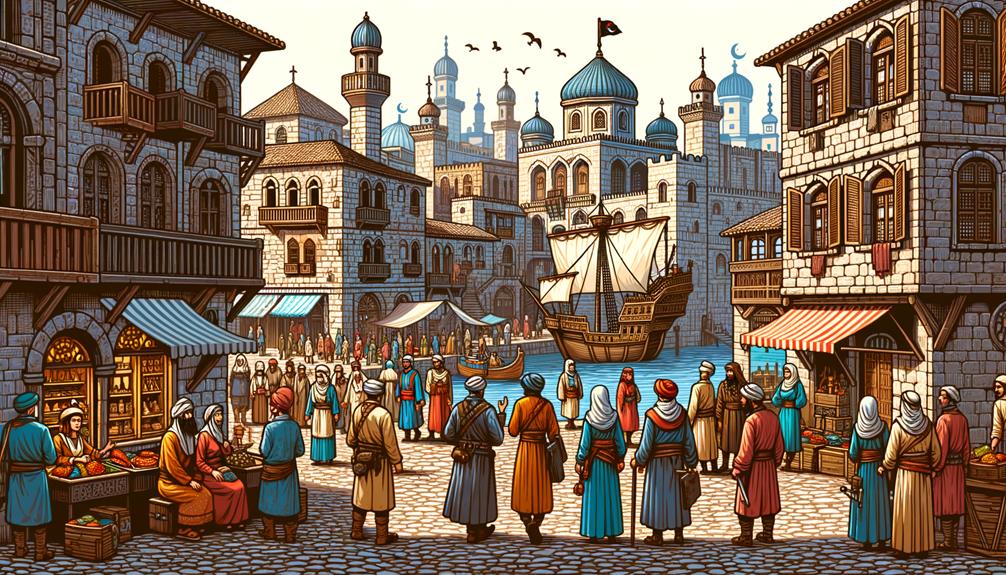
Strolling through Saint-Malo, you can't help but notice how privateering is an integral part of the city's heritage. It wasn't just a job; it was a family tradition handed down through generations, celebrated for its courage and skill. It's amazing to see how this profession has shaped the local culture and remains a source of pride for the people here.
Hereditary Privateering Profession
In Saint-Malo, privateering was more than just a job; it was a proud tradition handed down from father to son, like a cherished family heirloom. As I stroll through the cobbled streets on a private tour, I can't help but think about the deep-rooted customs that shaped this maritime town. Families like the Duguay-Trouins and Surcoufs didn't just engage in privateering—they embraced it as a way of life.
This trade thrived here, driven by France's conflicts with England and other maritime nations. It wasn't just about the excitement of the chase or the rewards of victory but a lifestyle, endorsed by the king through letters of marque. This legal support made privateers respected figures in the community.
Here's a closer look at what made privateering a family tradition:
- Generational Know-How: Skills and strategies were carefully taught from one generation to the next.
- Community Respect: Privateers were local heroes, and their stories of bravery were told time and again.
- Economic Boost: Privateering brought wealth and prosperity to Saint-Malo, cementing its significance.
- Cultural Heritage: The history of privateering became a core part of Saint-Malo's identity, shaping local culture and traditions.
This isn't just a chapter in history—it's a living legacy.
Cultural Significance in Saint-Malo
Amid the hustle and bustle of modern Saint-Malo, you can still feel the town's privateering history embedded in its core. Walking through its cobbled streets, it's clear that the bravery and success of its privateers are still celebrated today. The stories of figures like René Duguay-Trouin, who captured hundreds of merchant ships and war vessels, are legendary here.
In Saint-Malo, privateering was more than just a job; it was a family tradition, passed down through generations. This deeply rooted practice emerged from the town's frequent maritime conflicts, particularly with England. The privateers' daring feats and their crucial role in naval warfare remain a source of pride for the locals.
Even now, frigates like Le Renard and L'Étoile du Roy, once essential to privateering missions, are cherished symbols of Saint-Malo's rich history. These ships remind us of a time when the town's privateers disrupted enemy trade routes and protected their homeland. As you explore, you can't help but feel that the spirit of freedom and resilience that defined Saint-Malo's privateers still thrives today.
Famous Privateers
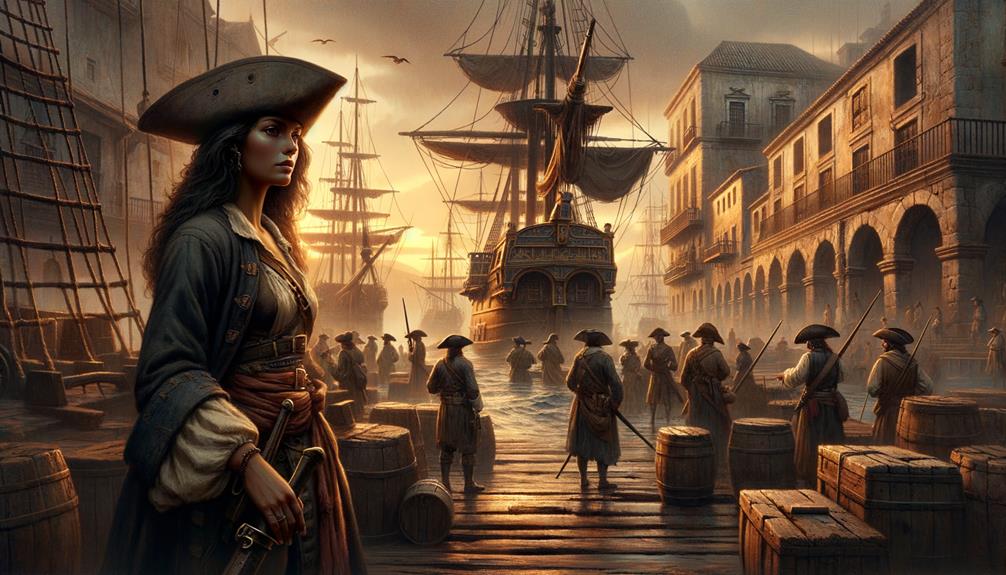
As you wander the cobblestone streets of Saint-Malo, it's hard not to think about the legendary privateers René Duguay-Trouin and Robert Surcouf. These men are celebrated for their daring exploits and significant contributions to maritime history. Duguay-Trouin, who earned the admiration of Louis XIV, captured hundreds of enemy ships with unmatched bravery. Surcouf, known as the "King of Privateers," targeted British vessels not only in Europe but also as far away as India, leaving a legacy that still echoes today.
Here are some interesting facts about these famous privateers:
- René Duguay-Trouin: He started his maritime career early and quickly advanced through the ranks thanks to his tactical brilliance and daring nature.
- Robert Surcouf: Known for his audacity, he once seized a British ship three times the size of his own, showcasing his fearless spirit.
- Legacy of Skill: Both men passed down their naval skills to future generations, influencing countless seafarers who came after them.
- Cultural Heroes: Their achievements are celebrated in Saint-Malo, shaping the local culture and boosting the city's rich history and tourism.
These privateers were more than just seafaring adventurers; they were symbols of freedom and resilience, embodying the indomitable spirit of Saint-Malo.
Privateer Frigates

Strolling along the docks of Saint-Malo, it's hard not to be impressed by the famous frigates like Le Renard and L'Etoile du Roy, which once sailed the seas under the command of bold privateers. These ships are more than just vessels; they represent a time when chasing freedom and fortune was the norm.
Le Renard, a 30-meter sailboat, brings to mind the 19th century, when it was captained by the renowned Robert Surcouf. Its sleek design and powerful cannons offered a true privateer experience, capturing the essence of maritime adventure and naval battles. The sight of its towering masts is a reminder of the vast horizons these ships once explored.
Then there's L'Etoile du Roy, a replica of a 1745 Malouin ship, now serving as a floating museum. Armed with 20 cannons and a crew of 240, it showcases the strength and skill of privateer frigates. These ships disrupted enemy trade routes and captured valuable goods, all under the legal practice of privateering. They didn't just sail; they fought for freedom and fortune, leaving a lasting impact on history.
Tourism and Culture
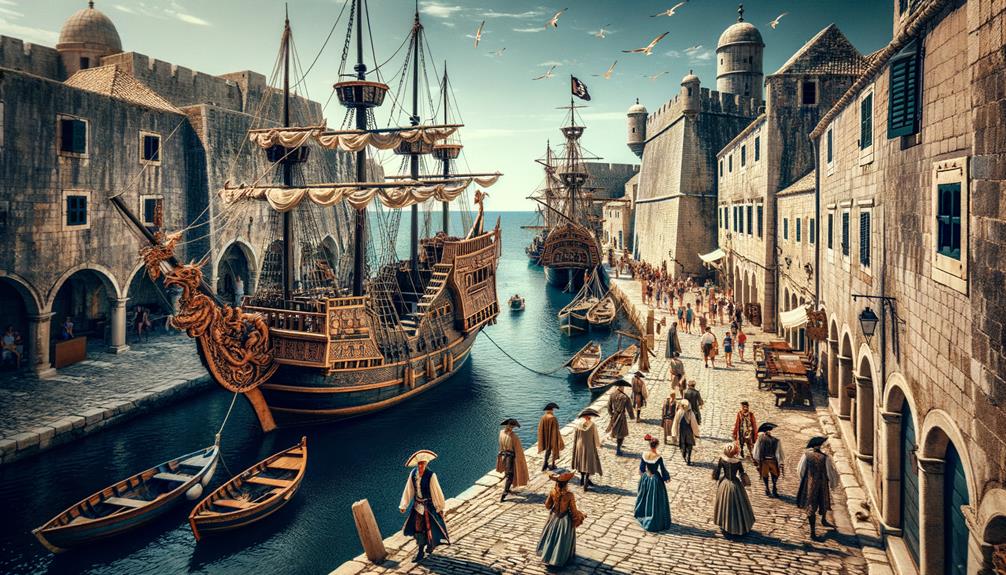
As I wandered around Saint-Malo, the city's rich history of privateers was everywhere. From the old monuments that quietly tell tales of the past to the lively local festivals, the sense of history is strong. Visiting these places felt like stepping back in time, blending learning with a bit of adventure.
Privateer Heritage Sites
Saint-Malo's privateer heritage sites vividly bring to life the city's rich history of naval adventures and cultural significance. As I stroll through this fortified town, I can't help but feel the presence of its storied past. These sites don't just offer a peek into history; they immerse you in tales of courage and cunning.
Here are four must-see spots:
- Musée d'Histoire de la Ville et du Pays Malouin: This museum dives into the lives of famous privateers like René Duguay-Trouin and Robert Surcouf, showcasing artifacts that recount their daring exploits.
- Fort National: Situated just outside the town walls, this fort offers stunning views and insight into Saint-Malo's defensive tactics.
- La Demeure de Corsaire: A visit to this 18th-century privateer mansion provides a fascinating glimpse into the luxurious lifestyle and treasures collected by Saint-Malo's privateers.
- Plage du Sillon: Although not a traditional heritage site, this beach offers a peaceful setting to reflect on the maritime culture that shaped this historic town.
These privateer heritage sites are more than static displays; they are living memories of a city built on adventure and resilience.
Historical Monuments Exploration
As I move from the thrilling tales of privateers to the broader historical monuments of Saint-Malo, the city's Old Town and towering walls invite me to dive into their rich past. Walking around the Old Town, I'm immediately struck by the grandeur of the Château de Saint-Malo Paramé. Its blend of Roman and Gothic architecture speaks of centuries gone by, seamlessly fitting into the city's pirate-themed narrative.
Next on my walk are the imposing Saint-Malo Walls. These ancient fortifications offer panoramic views of the sea, reminding everyone of the city's maritime strength. As I walk their length, I can't help but feel connected to the sailors and privateers who once gazed out over the same horizon.
Heading towards Fort National, another historical treasure, I'm captivated by its strategic importance and rugged beauty. An official guide enriches the experience, sharing hidden gems and stories that bring the past to life. Finally, a visit to Plage du Sillon offers a scenic backdrop, weaving the city's pirate legacy into its very fabric. Saint-Malo's historical journey is an unforgettable experience, leaving a lasting impression on my soul.
Local Cultural Activities
Exploring the local cultural activities in Saint-Malo, I find myself immersed in a vibrant tapestry of privateer-themed experiences and rich historical narratives. This walled city, with its storied past, offers an array of activities that allow me to really get a sense of its privateer legacy.
- Privateer Museums: These museums are filled with preserved treasures and artifacts, showcasing the bravery and naval prowess of Saint-Malo's privateers. Walking through the exhibits, I can almost hear the echoes of past battles and feel the adventurous spirit that once roamed these shores.
- Bike Tours: Riding along the cobbled streets and seafront paths, I get a panoramic view of the city's stunning coastal landscape. Biking through Saint-Malo offers a unique way to experience its historical sites and the breathtaking beauty that surrounds this fortified haven.
- Beach Visits: The sandy stretches invite me to relax and soak in the sun, but they also serve as a reminder of the strategic importance these shores held for privateers defending their city.
- Cultural Events: Local festivals and reenactments bring the history of the privateers to life. Participating in these events, I feel a sense of connection to the past, as if the courageous spirit of the privateers still thrives within the walled city.
Les Malouinières of Brittany

Near the historic port of Saint-Malo, the malouinières stand as lasting symbols of the rugged charm and storied lives of the privateers who built them. These country houses, designed with a hint of military architecture, offer a fascinating glimpse into the world of St Malo's adventurers. Each malouinière, crafted by local artisans, exudes a sturdy elegance that sets them apart from grander chateaux.
As I wander through these homes, the sense of freedom and adventure that must have driven their original owners is palpable. The robust stone walls and fortified structures speak volumes about the resilience and ingenuity of the privateers. Walking through the rooms—now often transformed into hotels or museums—I'm surrounded by artifacts and stories from a time when the seas were both a livelihood and a battleground.
The malouinières invite us to reflect on a life lived on the edge, driven by both risk and reward. They're more than just buildings; they reflect the spirit of Saint-Malo, where the line between pirate and hero was often blurred. These houses capture the essence of an untamed, adventurous past.
La Ville-Bague

La Ville-Bague is a beautiful malouinière from 1715, offering a unique glimpse into the past with its eclectic interior and lush gardens. Located near Saint Malo, this historic treasure invites you to delve into its rich history through guided tours. As I wandered through its rooms, I was struck by the mix of real treasures and unique finds, each piece telling its own story.
The guided tour took me through:
- The Gardens: Immaculately maintained and bursting with color, they offer a serene escape.
- The Dovecote: A charming structure that adds a quaint touch to the estate.
- The Chapel of St Sophia: Predating the house by 200 years, this chapel adds a layer of ancient mystique.
- The Interior: A collection of historical artifacts and eclectic decor.
Reflecting on my visit, I felt a profound connection to Saint Malo's storied past. The malouinière's ability to blend history with natural beauty is truly magical. Whether you're a history buff or simply looking for some peace and quiet, La Ville-Bague offers an enriching experience. Admission rates vary for adults, children, and students, making it accessible to anyone eager to learn about Saint Malo's heritage.
Attractions in Saint Malo
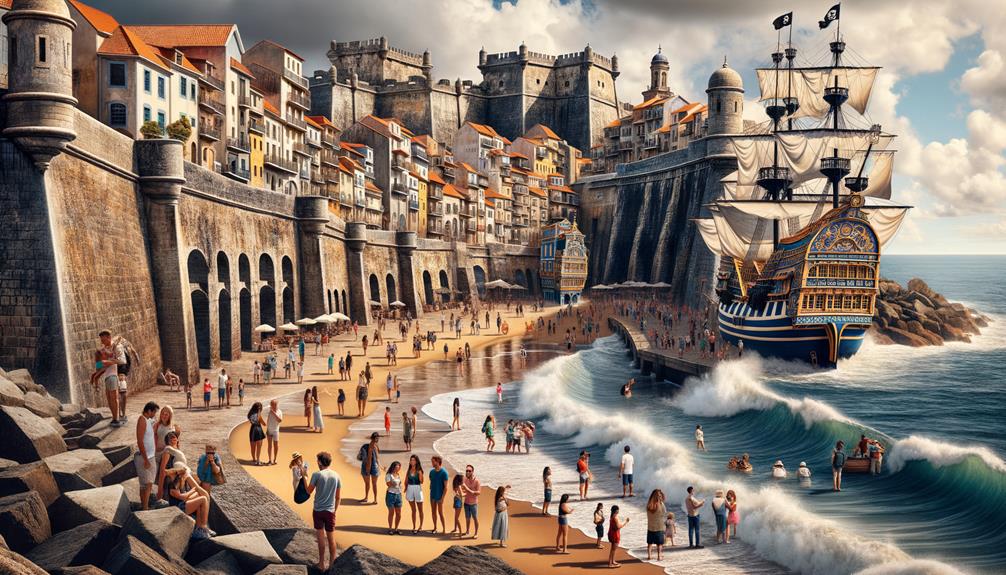
Strolling along the sturdy walls of Saint-Malo, I felt like I was stepping back in time. This city, known as the Corsair City, has a rich history that draws history buffs like myself. Each stone in the ramparts holds stories of pirates, naval battles, and daring adventures.
I made my way to the old prison on a tidal island, which you can only reach at low tide. Surrounded by the sea, the isolated building gave me a chilling sense of what life must have been like for those imprisoned there. You can almost feel the past in every creak and gust of wind.
Saint-Malo is also great for nature lovers. The rugged cliffs and bays called out to me for a hike, offering amazing views at every turn. Walking along the coastal paths, with waves crashing below and seabirds flying overhead, was a perfect way to reflect and unwind.
In the heart of the city, I found a relaxing atmosphere. Local breweries offered a taste of the region's craft beers, while nature reserves provided peaceful spots for bird watching. Saint-Malo's mix of history and natural beauty made it a memorable place to visit.
Frequently Asked Questions
Why Is Saint-Malo Famous?
Saint-Malo is well-known for its pirate history, with privateers capturing over 1,000 ships in the 18th century. The town's rich past fills its cobblestone streets with a sense of adventure, freedom, and resilience.
Did the Germans Lock the Gates of Saint-Malo?
During World War II, the Germans chose not to lock the gates of Saint-Malo. It's interesting to see how this decision impacted the town, leading to its bombing, evacuation, and eventual liberation by American forces.
Why Did the Americans Bomb Saint-Malo?
I saw the smoke rising and felt the ground shake. The Americans bombed Saint-Malo to weaken German defenses, free the city, and restore its freedom. Their goal was to break the chains of German occupation binding Saint-Malo.
Is St. Malo Walkable?
Saint-Malo is a breeze to explore on foot. I meandered through its charming streets, taking in the historic landmarks and beautiful buildings. The walkable roads and pathways made each step feel like a delightful trip back in time, giving me a real sense of freedom and adventure.

